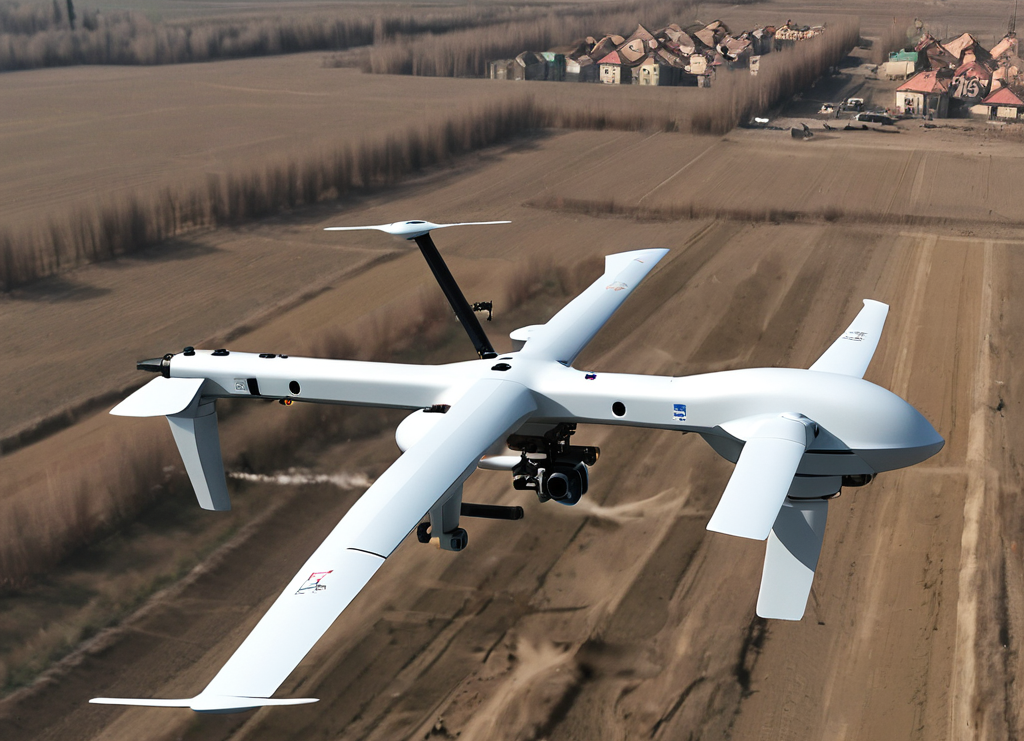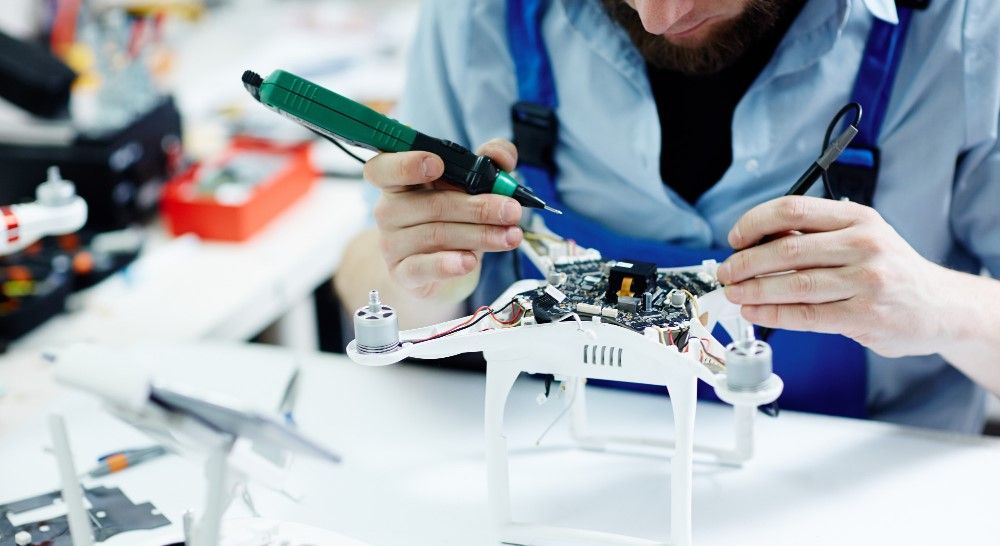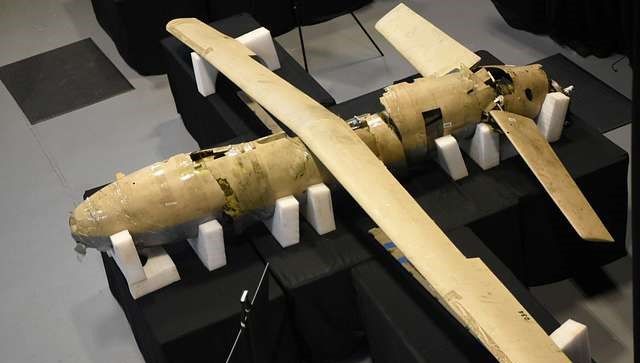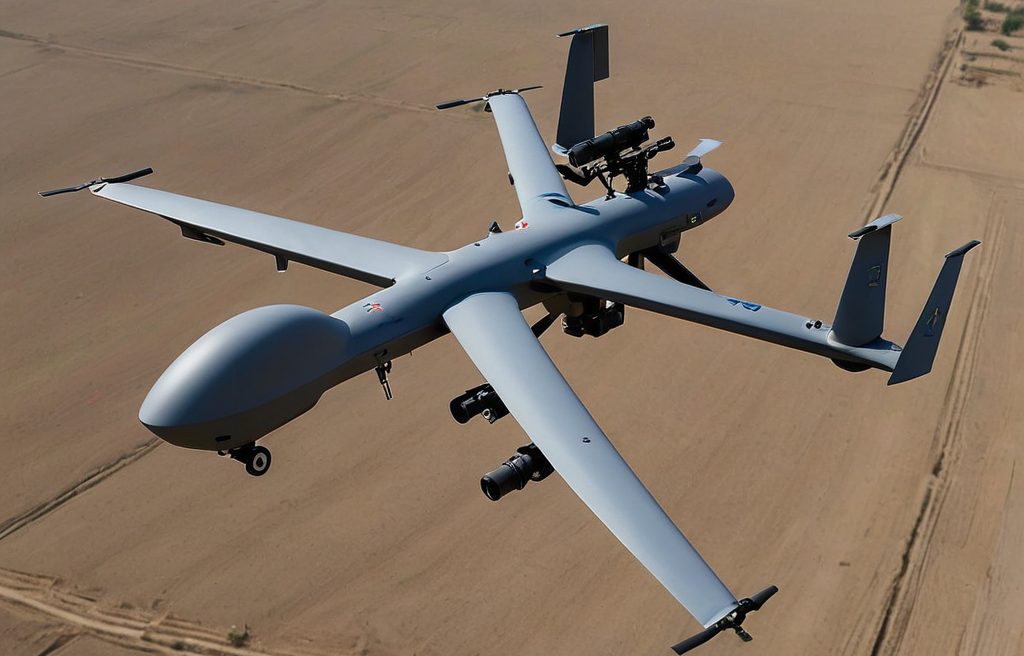How Adapting Ukraine’s Drone Industry Could Make All the Difference
How supply chain management, funding, and innovation is making drone production Ukraine’s best last defence.

It is by no accident that news reports of Russian advances are coinciding with a shortage of artillery shells in Ukraine’s war effort. Without sufficient money and ammunition, Kyiv will fall.
But with limited funding, Ukrainian military chiefs have an alternative plan to adapt the country’s military supply chain, weapon design, and drone production to turn the tide of battle.
One of Ukraine's most pressing military demands, aside from artillery shells, is sufficient quantity of ‘kamikaze drones,’ or unmanned aerial vehicles designed for one-way attacks. The combination of commercially accessible quadcopters equipped with weapons payloads is proving to be a highly effective and inexpensive asset. However, the very nature of these ‘suicidal’ loitering munitions means that a constant supply is needed.

“Crucially, it is these unmanned systems – such as drones – along with other types of advanced weapons, that provide the best way for Ukraine to avoid being drawn into a positional war, where we do not possess the advantage,” observes Valerii Zaluzhnyi, the former Commander-in-Chief of Ukraine’s armed forces. Adding that, “the number one priority here is mastery of an entire arsenal of (relatively) cheap, modern and highly effective, unmanned vehicles and other technological means. They provide real-time intelligence allowing the adjustment of fire around the clock, without pause – giving us the ability to deliver high-precision strikes against enemy targets in forward positions and in depth.”
Despite the Ukrainian military being the first to recognise the power of drone warfare, Russia has now adopted similar tactics, and now has the upper hand due to its larger drone production capacity.
With the current shortage of munitions supplied by the West, Ukraine will have to rely increasingly on drones if it is to survive.
“The Ukrainians are making many thousands of FPV [first-person view] drones every month, but they’re still well short of Kyiv’s goal of 1 million per year,” notes the arms industry journal C4IsrNet. “Although Ukraine has received some loitering munitions from the United States and other Western countries, they’re far more expensive and aren’t produced at anywhere near the sufficient scale.”

More long-range attack drones that can target locations well behind the front lines are also needed to counter a further advantage the Russians have. With a good supply of Shahed UAVs from Iran at the start of the war and now a new drone production facility manufacturing up to 350 a month long-range drones each month, Russian commanders can attack Ukrainian positions deep behind the frontlines.
Ukraine is adapting to this reality, with a variety of different long and medium-range drone designs, with plans to manufacture up to 11,000 ‘kamikaze’ drones in 2024, each with a top range of 300 km. Meanwhile, allies are doing what they can to provide arms assistance. Latvia, for example, is “… making progress in assembling a coalition of almost 20 countries to arm Ukrainian forces with ‘thousands’ of new unmanned aerial vehicles.” according to the country’s Defence Minister.
However, internal politics in America’s election year is putting the brakes on weapons development and manufacture, by restricting funds and raw material supply.
Foreign military financing [FMF] from US central government gives partner countries grants or loans to buy American defence supplies, services, or training. Over $1.6 billion in FMF was committed by Washington for Ukraine in the fiscal years 2022 and 2023, with President Biden requesting Congress approve a further $1.7 billion for 2024.

Following much political wrangling, that additional financial support now seems likely to go ahead, but getting the funds approved is only part of the problem. As John Hardie, a deputy director at the Foundation for Defense of Democracies explains, “Unlike Israel and Taiwan, Congress has not authorized Ukraine to use FMF funding for ‘offshore procurement.’ Kyiv must spend all its FMF money in the United States, whereas Jerusalem and Taipei can use some of their U.S.-provided funds for purchases from their own defense industries.”
This makes a difference, as allowing the funds to be spent in Ukraine would mean that, “Kyiv not only could buy more UAVs but could also swap out Chinese-made drones and components for Ukrainian-made alternatives.”
This would boost the Ukrainian economy and support further innovation in design and upscaling of production. It would also provide the funds for more advanced features, such as:
· thermal imaging cameras
· home-on-jam capability - where a drone can use passive radiation to find its target
· jamming defence systems
· machine vision – where a pilot can locate a target from a high altitude and then leave the drone to independently strike the target on its own
Drones play a crucial role in modern warfare - gathering intelligence, conducting surveillance, and artillery spotting, as well as conducting precision strikes on enemy targets. A stronger drone manufacturing sector would ensure that Ukraine has access to cutting-edge technology and capabilities to robustly defend its (and effectively Europe’s) borders. Only through proper funding and management of that investment can Ukraine become the innovative, focused, and productive drone manufacturer that it and the West needs it to be.
Car Construction Model Inspires Drone Design
or
China vs America: The Drone Arms Production Race
Photo credit: Pressfoto on Freepik, Jenkirbyhistory, & Gencraft

